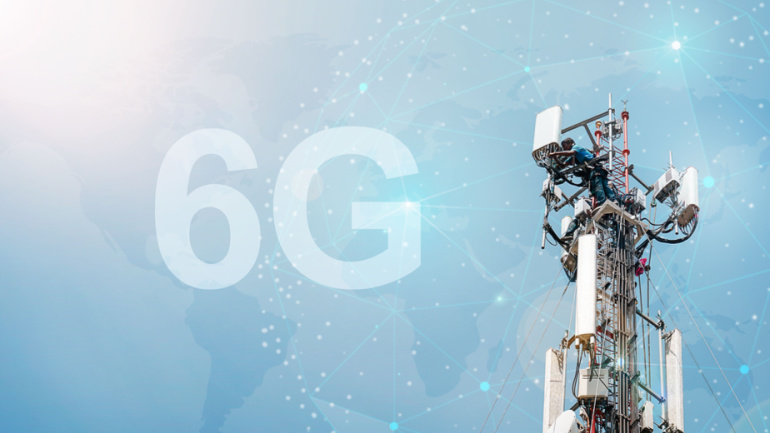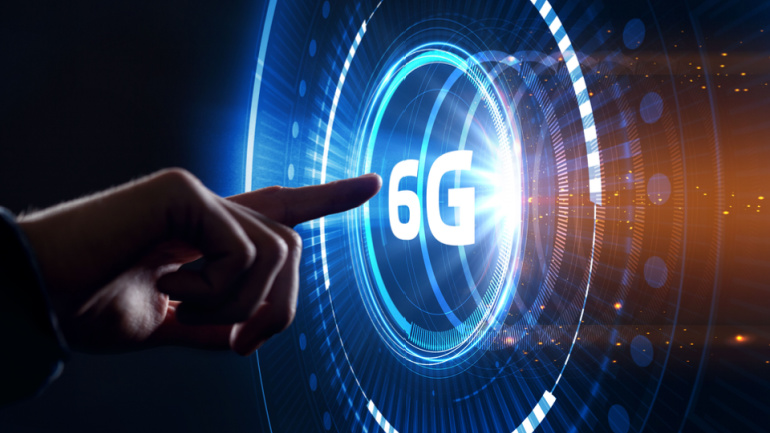The GSMA and the European Space Agency are planning a collaboration to further integrate satellite and cellular technologies. This new alliance promises to bring non-terrestrial networking (NTN) into the market mainstream, a significant step, previously signaled by NTN’s inclusion in the 3GPP’s 5G standards. With eyes set for integration in future 6G networks, this collaborative endeavor aims to advance unique solutions for businesses and consumers. It’s an astounding opportunity that potentially could yield a high-growth market worth $18 billion between 2024 and 2031.
The US and India strengthen their strategic partnership, focusing on 6G research, Open RAN, and semiconductors, while collaborating on technology sharing, co-development, and co-production opportunities between industry, government, and academia.
Keysight and Nokia Bell Labs collaborate to tackle high-frequency challenges in mobile technology, exploring the potential of D-band and E-band frequencies, dubbed “subterahertz,” for 6G applications such as augmented reality and autonomous transportation.
Discover the potential of Reconfigurable Intelligent Surfaces (RIS) in shaping the future of 6G networks, enhancing coverage, spectral efficiency, and security while being cost-effective in previously unreachable areas. Explore RIS use cases as defined in ETSI’s latest report.
The UK government has announced a £110 million investment in research and development for next-generation wireless technology and telecoms security, with a focus on 5G and 6G. This investment is intended to enhance the UK’s position as a global leader in telecoms research and development. As part of this investment, three top UK universities – the University of York, the University of Bristol, and the University of Surrey – will each receive £28 million to collaborate with major telecoms companies such as Nokia, Ericsson, and Samsung to develop and create future networks such as 6G. This follows Ericsson and Samsung’s recent announcement to establish 6G research labs in the UK. The investment will also aid in the deployment of ultrafast 5G by making it easier for new companies to enter the market. The universities will work with world-class UK academics and industry players to ensure that future network…
InterDigital, a technology research and development company, announced that it has been granted funding to support five Horizon Europe 6G Flagship research projects, each of which is distinctively devoted to empowering innovative technology advancement and exploratory infrastructures in 6G. InterDigital is one of the most well-known research and development specialists in mobile technology, so their involvement is not a huge surprise. It also gives us an idea of the kind of things Europe thinks are deserving components of the future generation of mobile technology, because being invited to contribute to no less than five projects was deemed a triumph worthy of a special announcement. The flagship projects entrusted to InterDigital are part of a portfolio of 35 research, innovation, and trial projects selected by the EU’s Smart Networks and Services Joint Undertaking (SNS JU). The SNS JU, co-led by the European Commission and the 6G-IA industry organization, is in…
Nokia, DOCOMO, Fujitsu, NEC, and NTT have established a collaboration to design and develop critical 6G technologies. In proof-of-concept (POC) experiments, next-generation mobile technologies will be focused on the sub-terahertz band and AI-enabled interfaces. The partnership will concentrate on two proof-of-concepts for upcoming 6G technologies: an AI native air interface and sub-THz radio access. These seek to prove that an AI-based 6G air interface outperforms a traditional air interface in terms of performance, and that high-data-rate beamformed access can be obtained in a high frequency band at 140 GHz. Nokia thinks that 6G will not only improve on existing technologies and systems, but will also expand and revolutionize the capabilities of a network. It will bring together the human, physical, and computer realms in order to unleash the full human potential. Nokia has identified six important technologies that will be critical components of future 6G networks in order…
With 5G networks still being deployed around the globe and 4G and even 3G networks still in use in many parts of the world, the term 6G is already a huge topic in the industry. 6G is the name for what will be the sixth generation in cellular technology, with a particular focus on increasing the capabilities and reducing the latency of wireless and edge networks. These are early days in the life of 6G and thus far this technology is only a theoretical discussion. The networks of the future will be a key component in virtually all areas of our lives, society and industry, meeting the communications needs of people and intelligent machines. So, let us dive into the world of 6G and explore what possibilities it holds. What will 6G be? 6G will be the sixth generation of mobile communications. It is still obscure what the final form…
Orange, a French multinational telecommunications corporation, has extended its 5G test program in the 26 GHz band. This initiative was launched in 2019 to focus on testing the capabilities of frequencies for industrial use cases in France. A consortium consisting of Orange, Nokia, the railway company SNCF and the academic facility Institut Mines – Telecom (MIT), has been given a grant from the French government to trial 4.0 industrial applications over 5G using the 26 GHz spectrum. The grant will allow the consortium to develop an existing pilot that Orange performed for eighteen months at the Rennes train station in France, while working with the French state-owned railway company SNCF and Nokia. As part of the project, Orange will provide network services and Nokia will provide technological connectivity offerings, including private networks, while MIT will focus on data hosting using edge computing. This project puts emphasis on…
In recent years, 5G technology has been deployed around the world at a staggering pace, and the rollout is predicted to continue in the upcoming years. Despite the fact that 5G technology is still in its early stages, the telecom industry is already envisioning and trying to define what the next generation of mobile technology, 6G, will look like. The 5G Infrastructure Association (5GIA) has published a white paper with the title “European Vision for the 6G Network Ecosystem”, which covers key areas of 6G research from technical, societal, policy and business perspectives. As stated in this white paper, 6G will participate in making headway towards achieving more united digital, physical and personal worlds. The key features of the next-gen technology include intelligent connected management and control functions, programmability, integrated sensing and communication, energy footprint reduction, reliable infrastructure, scalability and affordability. 5GIA says that 6G will usher…












